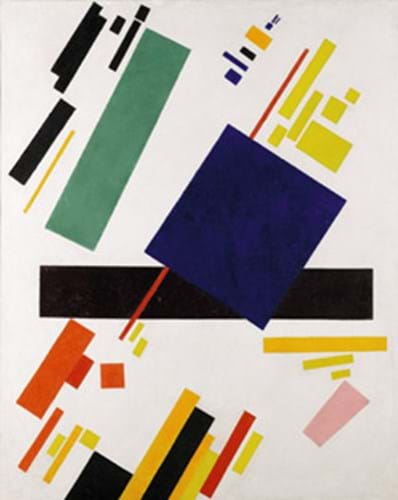
Just 64 per cent of the 70 lots found buyers at Sotheby's evening sale of November 3 (the lowest for one of these sales at Sotheby's for seven years) for a $197m (£120m) total that was well below the $338m-475m overall estimate.
Auctioneer Tobias Meyer cited a "changed financial environment'' for what he referred to as a "new market'' for art.
Attempts to downgrade reserves set in the summer staved off any 'meltdown', and it was clear that the auction houses were keener to sell and lose money on guaranteed works rather than hold onto them. Ten days prior to this sale, Sotheby's had reported a loss of $15m in guarantees from recent auctions in Hong Kong and London. More will follow after this series.
There was speculation was that they took a substantial hit on Edgar Degas's 1879 seated ballerina Danseuse au Repos that financier Henry Kravis had bought at Sotheby's Bond Street in 1999 for a mighty £16m. In the summer, the auction house gave the Kravises a guarantee that experts said was more than $40m. Yasuaki Ishizaka, head of Sotheby's Tokyo, took the winning bid by phone at $33m (£20.2m).
With hedge-fund traders and Russian oligarchs suffering in the financial markets, and oil prices falling, Sotheby's worked hard to make sure their biggest-ticket items and biggest financial risks remained covered. Kasimir Malevich's 1916 Suprematist Composition sold to a single bid of $53.5m (£32.7m). The price was a record for the artist by some distance, but the auctioneers had announced several weeks ago that they had contracted a buyer to bid on the picture, so it was bound to sell no matter what.
Their 'irrevocable bid' would provide the opening bid on the lot. If someone else were willing to pay more, the proceeds of the 'upside' (the difference between what the guarantor was willing to pay and the final price) would be divided among Sotheby's and their risk taker. The buyer is understood to be a Russian.
Sotheby's had, however, been unsuccessful in keeping a $30m Cubist Picasso in the sale. The official line was that the sellers, heirs of the Surrealist painter Enrico Donati, who had bought Arlequin (Buste) in 1947 for $12,000, were pulling the work two weeks before the sale "for private reasons", but the painting would have been tainted if it had failed to sell.
Casualties on the night included Modigliani's $18m-25m Homme Assis (entered by the Nahmad family who had bought it at Christie's in 1996 for £1.9m) and one of Monet's lavender views of Rouen Cathedral pitched at $16m-22m.
The evening's brightest moment was the performance of Edvard Munch's 1894 Vampire, a picture on the market for the first time since 1934 and previously on loan to New York's Metropolitan Museum of Art and Washington's National Gallery of Art. It, too, was subject to an 'irrevocable bid', but beat the $30m estimate, selling to a US collector at $34m (£20.8m), an artist's record that tops the $27.5m (£14m) paid for Girls on a Bridge at Sotheby's New York in May.
Following a break for election night, Christie's held back-to-back evening sales.
First was The Modern Age, a hardback catalogue combining art from the estates of New York society figures Rita K. Hillman and Alice Lawrence, met a lukewarm response on November 5.
"The estimates (set early in the summer) were from an earlier time, and the market has changed now," conceded Christopher Burge, the evening's auctioneer. The two collections of good but not stellar material brought a total of $43m (£26.3m) against its $104m low estimate. Of the 58 lots, 17 failed to sell, including a 1960 Rothko No. 43 (Mauve) with hopes of $20m-30m that, like all of the material in the Hillman property, had been guaranteed by Christie's.
With owner François Pinault in attendance, Christie's painted a slightly more encouraging picture of the market the following evening. The highlight was a record for Juan Gris. His 1915 Cubist still life Livre, pipe et verres, with a rich exhibition history, found three bidders at its $12.5m-18.5m estimate. New York private dealer Franck Giraud bought it for an American collector at $18.5m (£11.3m).
Nevertheless, with no urgency to vie for mediocre pictures that suddenly looked very expensive, 36 of the 82 works (44 per cent) went unsold for a total of $128.3m (£78.4m) - just over half the pre-sale low estimate of $240.7m. Most lots packaged for the market as it existed six months ago found little in the way of competition.
Picasso's 1934 Deux personages (Marie-Therese et sa soeur lisant), depicting the artist's mistress and her sister, brought $16m (£9.8m), some distance below its estimate, while Kandinsky's 1909 Expressionist Studie zu Improvisation 3 sold at its low estimate of $15m (£9.2m).
It was one of six lots in the sale guaranteed by Christie's, all of which sold.
Giacometti sculptures have been a market strength in recent years, but Three Walking Men I, conceived in 1948 and cast in 1950, did not excite at $14m-18m. A lot Christie's had guaranteed, it was allowed to sell to the Montreal dealer Robert Landau at $10.2m (£6.3m), although this was twice the premium-inclusive $5.7m (£3.5m) it had fetched at Sotheby's New York in 1999.
Americans represented 61 per cent of the buyers, with Europeans (a category that includes Russians) trailing at 26 per cent. Middle Eastern collectors accounted for only two per cent of buyers.
Yet another test of this so-called "new market" comes this week as Sotheby's, Christie's and Phillips du Pury & Co all hold their contemporary art auctions in the Big Apple.
By Roland Arkell




